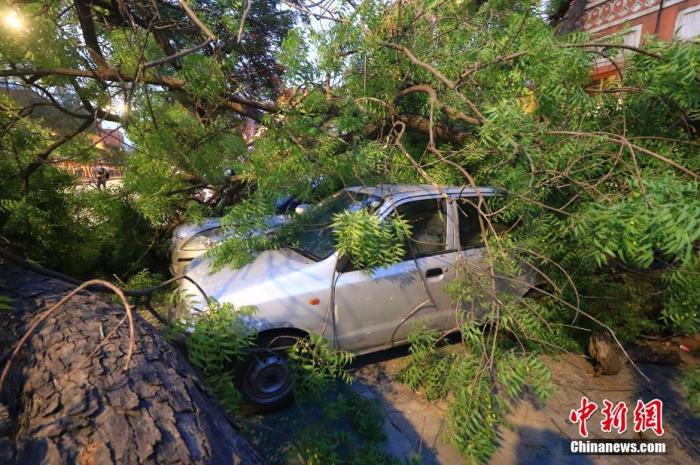China News Service, October 28. According to Singapore’s Lianhe Zaobao, studies have found that an increase in extreme weather events ranging from droughts and floods to heat waves and hail has exacerbated climate migration in India.
Those who bear the brunt are the poor, who are forced to abandon their homes, land and livelihoods.
A survey conducted by the International Institute for Environment and Development (IIED) on more than 1,000 households in Uttar Pradesh, Madhya Pradesh, and Rajasthan, where India’s seasonal immigrants are more frequent Migrate now.
According to this study, people who encounter droughts and floods that destroy crops, or hurricanes that hinder fishing, have a high seasonal migration rate.
Researchers say that many of the poorest people in India, such as small farmers, are increasingly struggling to cope with the devastation caused by bad weather.
India is facing rising sea levels, more heat waves and more severe hurricanes.
Data map: September 11, local time, in New Delhi, India. After a heavy rain, the road area was heavily watered, and people rode motorcycles into a tunnel full of stagnant water.
The report’s co-author Ballad Waj said: “The scale of climate migration is shocking and we can’t pretend that it didn’t happen. Droughts, sea level rise and floods put additional pressure on those who are already struggling to survive. Forcing them to leave their homes in order to survive."
The 2021 Global Climate Risk Index observed by the research institute Germany listed India as one of the 10 countries most severely affected by climate change.
In 2020, India suffered the worst locust attacks in decades, three hurricanes, nationwide heat waves and floods, killing hundreds of people and forcing thousands to move.
Balad Waj said: "More frequent and severe weather has exceeded the limits of human resilience. The community cannot cope and recover easily. The loss and damage suffered by people is very high, and they migrate because they have reached a stage of despair. "
India’s first climate change assessment report released in 2020 predicts that under “business as usual” conditions, the temperature will rise by 4.4 degrees Celsius by the end of this century.
According to the report, if no action is taken, the frequency of heat waves will triple, the intensity of cyclones will increase, and the sea level will rise by 30 cm.
Balad Waj said: "We need to plan for the hundreds of millions of people who will have to move due to climate change in the next few decades."
Data map: On May 30, 2021 local time, Jaipur, Rajasthan, India was hit by a strong storm. The tree was uprooted and the vehicle was destroyed.
Image source: Visual China
IIED said that India’s social protection plan did not take into account extreme weather, nor could it establish climate resilience.
According to the report, the National Rural Employment Guarantee Program promises to allow each family to work at least 100 days a year, but this is not a "viable safety net" because of delayed wage payment and lack of transparency.
Balad Waj also said that in addition to reforming the existing mechanism, preemptive action is also needed before disaster strikes.

